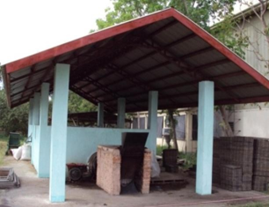Le Quang Vinh1 and Helen F. Gavino2
1 Nong Lam University, Ho Chi Minh City, Vietnam
2 Central Luzon State University, Nueva Ecija 3120, Philippines.
Email: lqvinhnlu@gmail.com
ABSTRACT
A fixed flatbed rice dryer model that operates based on the principle ofairflow-reversal drying was introduced in the Philippines through a collaborative projectbetween the Nong-Lam University, Ho Chi Minh City, Vietnam (NLU) and the PhilippineRice Research Institute (PhilRice), Philippines.The dryer can be an alternative solution for rice drying in the Philippines, especially during the rainy season. The study was conducted to evaluate the performance of the reversible airflow flatbed dryer under Philippine conditions, and compare it with the existing conventional flatbed dryer (also called as PhilRice-UAF (or Maligaya) flatbed dryer which was are sultof the collaboration between NLU and PhilRice in 1994). The performance evaluation was conducted in three drying batches of newly harvested rice seeds. In the technical aspect, the comparison of means (using two-tail t-Test) for respective parameters in the two dryers revealed that the reversible airflow flatbed dryer was not significantly different from the existing conventional flatbed dryer; this implies that the SRA dryer could be promoted onlarge scale production, given that the drying cost of PhP0.74* is lower than the prevailing mechanical drying cost of PhP1.13 per kg of dried paddy in the Philippines.
Key words: flatbed dryer, reversible airflow, rice seed drying
Số lần xem trang: 3687


